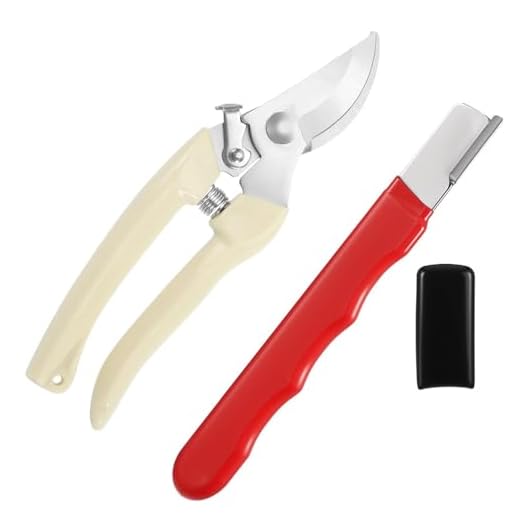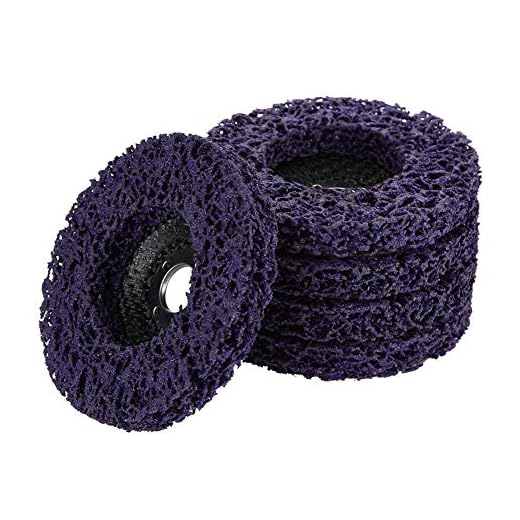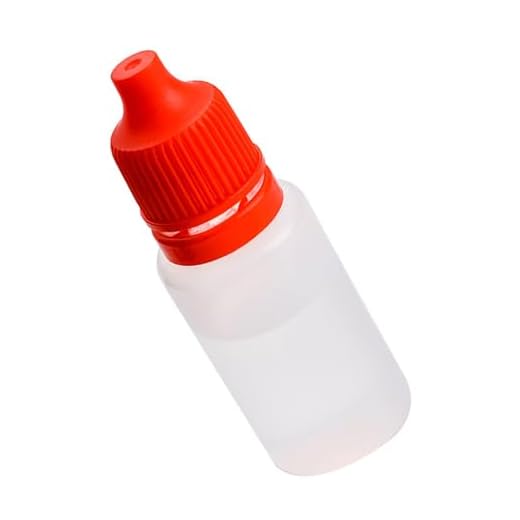How To Fix Rusty Shears

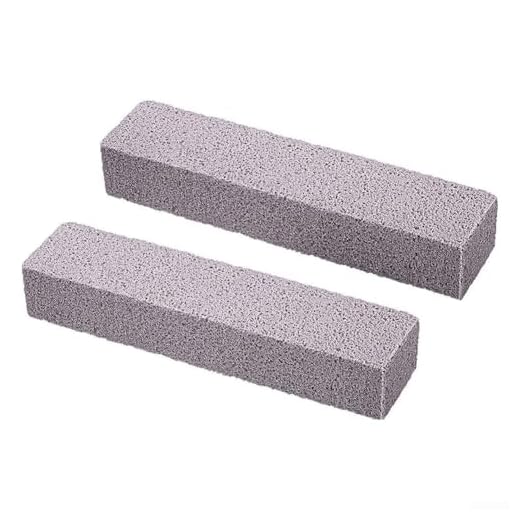
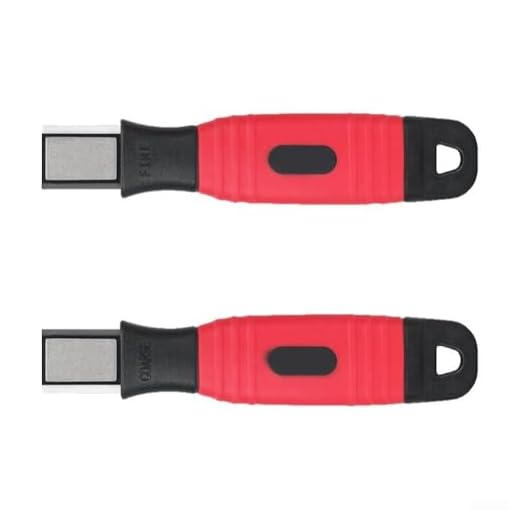

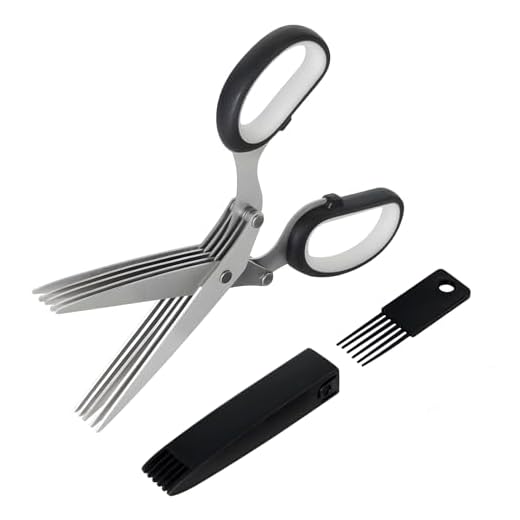
Rusty shears can make even the simplest gardening tasks a chore. But don’t worry, with a little bit of elbow grease and some handy tips, you can easily get your shears back in shape.
Rust occurs when iron reacts with oxygen and moisture, forming iron oxide. Over time, this can cause your shears to become stiff and ineffective. However, fixing rusty shears is not as daunting as it may seem.
First, start by cleaning the shears to remove any dirt or debris that may be contributing to the rust. Use a damp cloth or sponge to wipe away any loose particles.
Next, use a wire brush or sandpaper to scrub away the rust. Make sure to wear protective gloves to prevent any injuries. Focus on the areas where rust is most concentrated, such as the blades and the pivot point.
After scrubbing away the rust, apply a rust dissolver or a solution of equal parts white vinegar and water to the affected areas. This will help loosen any remaining rust and prevent it from spreading further.
Once the rust has been dissolved, wipe the shears dry with a clean cloth. To prevent future rusting, apply a thin coat of oil to the blades and pivot point. This will help protect the metal from moisture and oxidation.
Finally, store your shears in a dry place to further prevent rust from forming. Consider using a clean, dry cloth or a plastic sheath to keep them protected.
By following these simple steps, you can easily fix rusty shears and get back to enjoying your gardening tasks with ease. Remember, regular cleaning and maintenance will help prolong the life of your shears and keep them rust-free.
Why Rusty Shears Are a Problem and How to Fix Them
Rusty shears can be a real hassle, causing frustration and difficulty when trying to use them for gardening or other tasks. Not only can rust make your shears less efficient, but it can also lead to further damage if not addressed promptly. In this article, we will explore why rusty shears are a problem and provide some helpful tips on how to fix them.
The Problems with Rusty Shears
When shears become rusty, their blades can become dull and less effective. Rust acts as an abrasive, hindering the smooth movement of the blades and making it harder to cut through plants or other materials with precision. This can lead to uneven or jagged cuts, damaging the plants and making it harder for them to heal.
Furthermore, rust can weaken the structure of the shears over time. If left untreated, the rust can eat away at the metal, causing it to become weak and brittle. This can eventually lead to the shears breaking or snapping while in use, posing a safety hazard to the user.
Fixing Rusty Shears
Fortunately, rusty shears can be restored to their former glory with a few simple steps:
- Clean the shears: Start by removing any dirt or debris that may be stuck on the blades. Use a stiff brush to scrub away any loose rust particles.
- Soak in vinegar: Fill a container with white distilled vinegar and submerge the blades of the shears. Let them soak for a few hours or overnight to dissolve the rust.
- Scrub with steel wool: After soaking, use a piece of steel wool to gently scrub away any remaining rust. Be careful not to apply too much pressure, as this can damage the blades.
- Rinse and dry: Thoroughly rinse the shears with water to remove any vinegar residue. Dry them completely with a clean towel to prevent further rusting.
- Apply lubricant: Once the shears are dry, apply a light coat of lubricant or oil to the blades and pivot point. This will help prevent future rust and ensure smooth operation.
By following these steps, you can effectively remove rust from your shears and restore them to working condition. Remember to regularly clean and lubricate your shears to prevent rust from forming again in the future. With proper maintenance, your shears will remain sharp and reliable for all your gardening needs.
Understanding the Impact of Rust on Shears
Rust can have a detrimental impact on the performance and lifespan of shears. When shears are exposed to moisture and air, they can develop rust, which is a form of iron oxide that forms when iron reacts with oxygen in the presence of water or moisture. Rust can weaken the metal blades of shears, making them less effective in cutting and pruning tasks. It can also cause the blades to become dull and lose their sharpness over time.
The presence of rust on shears can also lead to the spread of fungal and bacterial diseases among plants. When rusty shears are used to prune or trim plants, the rust particles can contaminate the cuts and potentially introduce pathogens to the plants. This can result in stunted growth, wilting, and even death of the affected plants. Therefore, it is crucial to regularly clean and maintain shears to prevent rust formation and ensure the health of the plants.
Rust not only affects the functionality of shears but also their appearance. The orange-brown color of rust can make shears look old, worn-out, and unappealing. This can be particularly problematic for professional gardeners or landscapers who value both the functionality and aesthetics of their tools. Regular maintenance and cleaning of shears can help prevent rust and keep them looking clean and professional.
In summary, rust can significantly impact shears by weakening their blades, reducing their cutting effectiveness, promoting the spread of plant diseases, and diminishing their visual appeal. Taking necessary precautions to prevent rust formation and implementing proper maintenance practices can help extend the lifespan and optimize the performance of shears.
Assessing the Extent of Rust on Your Shears
Before attempting to fix rusty shears, it’s important to assess the extent of the rust on the blades. This will help determine the best course of action to restore them to their original condition. Here are a few steps to help you assess and evaluate the level of rust on your shears:
Step 1: Examine the Blades
Carefully inspect the blades of your shears for any signs of rust. Look for discoloration, pitting, or roughness on the surface of the metal. It’s common for rust to accumulate near the cutting edge or along the length of the blades. Identify the areas that are most affected by rust.
Step 2: Check for Blade Mobility
While examining the blades, test the mobility of the shears. Rust can sometimes cause stiffness or sticking between the blades, impacting their overall functionality. Gently open and close the shears to ensure there is no resistance or obstruction in their movement.
By carefully evaluating the rust on your shears, you’ll have a better understanding of the severity of the situation. This assessment will help you determine the appropriate actions needed to remove the rust and restore your shears to working condition.
Steps to Prepare Your Shears for Cleaning
Before you start cleaning your rusty shears, it’s important to properly prepare them. By following these steps, you’ll ensure that your shears are ready for cleaning and will achieve the best results.
Gather your materials
First, gather all the necessary materials you’ll need for cleaning the rusty shears. This includes:
- Steel wool or a wire brush
- Vinegar or lemon juice
- A bucket or container for soaking the shears
- A clean cloth or rag
- Gloves for protecting your hands
Safety precautions
Before you start working with the rusty shears, take the necessary safety precautions:
- Wear gloves to protect your hands from any sharp edges or chemicals.
- Make sure you have good ventilation in your workspace to avoid inhaling any fumes.
- If you’re working with any harsh cleaning agents, use goggles to protect your eyes.
Note: Always read and follow the instructions and warnings on any cleaning agents you use.
Remove any debris
Before you begin cleaning, remove any dirt, debris, or plant matter from the shears. Use a cloth or brush to gently wipe away any loose particles from the blades and handles.
Tip: You can also use a toothbrush or a small soft-bristle brush to reach any tight spaces or crevices.
Once you’ve completed these steps, you’ll be ready to start cleaning your rusty shears. Following proper preparation will help ensure a successful and effective cleaning process.
Effective Cleaning Techniques for Rusty Shears
If you have rusty shears, it’s important to clean them properly to restore their functionality. Rust can hinder the cutting action and weaken the blades, so following the right cleaning techniques is vital. Here are some effective methods to clean rusty shears:
1. Vinegar Soak
One of the simplest and most effective ways to remove rust from shears is by soaking them in vinegar. Fill a container or bucket with vinegar and submerge the shears in it. Let them soak for at least a few hours or overnight. After soaking, scrub the blades gently with a cloth or soft brush to remove any remaining rust. Rinse the shears thoroughly with water and dry them completely.
2. Baking Soda Paste
Baking soda can also help remove rust from shears. Create a paste by mixing baking soda with a small amount of water. Apply the paste to the rusty areas of the shears and let it sit for about 30 minutes. Then, scrub the blades with a brush or cloth to remove the rust. Rinse the shears with water and dry them thoroughly.
3. Sanding Method
If the rust on your shears is stubborn, sanding can be an effective technique. Use sandpaper with a fine grit to gently sand away the rust from the blades. Be careful not to apply too much pressure, as it may damage the shears. After sanding, clean the shears with a cloth or brush to remove any debris and rust particles. Rinse and dry them thoroughly after cleaning.
4. Lubrication
After cleaning and removing the rust, it’s important to lubricate the shears to prevent future rust formation. Apply a thin layer of oil or lubricant like WD-40 to the blades and pivot point. This will help protect the metal from moisture and corrosion. Wipe off any excess oil before using the shears.
By following these effective cleaning techniques, you can remove rust from your shears and restore their cutting performance. Regular maintenance and proper storage can also help prevent rust formation in the future.
Applying Rust Preventive Measures to Keep Your Shears in Top Condition
Keeping your shears rust-free is essential to maintaining their functionality and prolonging their lifespan. Rust can negatively impact the cutting edge and overall performance of your shears, making it important to apply preventive measures. Here are some tips to help you keep your shears in top condition:
1. Clean and Dry Your Shears
After each use, make sure to thoroughly clean your shears with warm soapy water and a brush. Pay attention to hard-to-reach areas where rust may accumulate. Once clean, dry your shears completely to prevent moisture from causing corrosion.
2. Apply a Protective Oil
Using a rust preventive oil can help create a barrier between the metal and moisture, minimizing the chances of rust forming. Apply a few drops of oil to the blades and pivot area, then wipe off any excess. This will help keep your shears lubricated and protected.
3. Store Properly
Proper storage is essential to prevent rust formation. Find a cool, dry place to keep your shears when not in use. Avoid storing them in humid conditions or places prone to moisture, such as basements. Additionally, consider using a protective sheath or case to provide an extra layer of defense against rust.
4. Monitor and Address Rust
Regularly inspect your shears for any signs of rust. If you notice any, address the issue immediately to prevent further damage. Use a rust removal product or gentle abrasive to remove the rust, followed by cleaning and oiling the affected areas. Take care to avoid damaging the cutting edge while removing rust.
By following these rust preventive measures, you can ensure your shears remain in top condition, allowing you to enjoy their cutting capabilities for years to come.
| Tip | Description |
|---|---|
| Clean and Dry | Thoroughly clean your shears after each use and dry them completely to prevent moisture buildup. |
| Apply a Protective Oil | Use a rust preventive oil to create a barrier against moisture and keep your shears lubricated. |
| Store Properly | Find a cool, dry place to store your shears, and consider using a protective sheath for added protection. |
| Monitor and Address Rust | Regularly inspect your shears for rust and address it promptly using appropriate rust removal methods. |
Regular Maintenance Tips to Avoid Rust on Shears
Maintaining your shears properly is crucial to prevent rust from forming. Here are some regular maintenance tips to help you avoid rust on your shears:
| 1. Clean and Dry | After each use, make sure to clean your shears thoroughly using warm soapy water and a scrub brush. Remove any dirt, sap or debris that may be stuck on the blades. Once cleaned, dry the shears completely to prevent moisture from causing rust. |
| 2. Apply Lubricant | Regularly applying a thin layer of lubricant to your shears’ blades and joints can help prevent rust. Use a high-quality lubricant specifically designed for gardening tools. This will create a protective barrier against moisture and oxidation. |
| 3. Store Properly | Store your shears in a dry place that is not exposed to humidity or extreme temperature changes. Avoid leaving them outside or in a damp shed. Consider using a tool organizer or hanging them on a pegboard to keep them off the ground and prevent moisture accumulation. |
| 4. Avoid Excessive Exposure to Water | Avoid exposing your shears to excessive water, as constant contact with moisture can lead to rust formation. If you are pruning plants that require frequent washing of the blades, make sure to dry them thoroughly afterward. |
| 5. Check for Rust Regularly | Make it a habit to regularly inspect your shears for any signs of rust. If you notice any rusty spots, immediately remove the rust using steel wool or a wire brush. Once the rust is removed, clean and dry the blades before applying lubricant. |
| 6. Sharpen Blades | Sharp blades are less likely to develop rust, as they are more efficient at cutting and less prone to damage. Regularly sharpen your shears’ blades using a sharpening stone or tool to keep them in optimal condition. |
By following these regular maintenance tips, you can extend the lifespan of your shears and keep them rust-free for years to come. Remember: prevention is key!
Questions and answers
Why do shears get rusty?
Shears can get rusty due to exposure to moisture and oxygen, which causes the metal to oxidize and form rust.
How can I prevent shears from getting rusty?
To prevent shears from getting rusty, make sure to clean and dry them properly after each use. Additionally, you can apply a thin coat of oil or rust-resistant spray on the blades.
Can rusty shears still be used?
Rusty shears can still be used, but the rust can affect their performance and make them less effective. It’s best to clean and remove the rust to restore the shears to their optimal functionality.
What are some household items that can be used to remove rust from shears?
Vinegar, lemon juice, baking soda and steel wool are some common household items that can be used to remove rust from shears. These items can help dissolve the rust and make it easier to clean the shears.
Are there any professional rust removal products available for shears?
Yes, there are professional rust removal products available specifically for shears. These products are designed to effectively remove rust and restore the shears to their original condition. They can be found at hardware stores or online.

